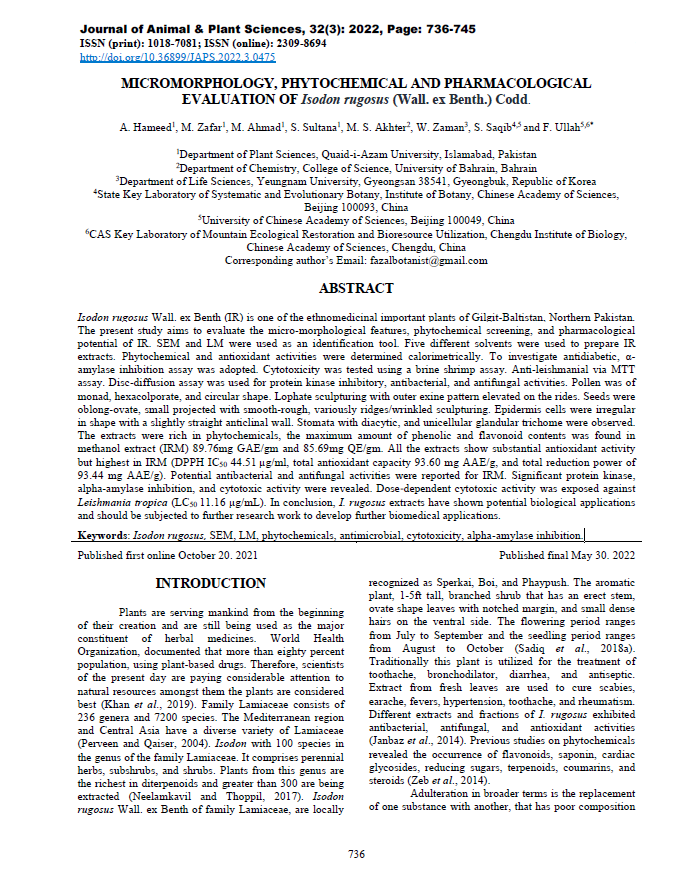Document
Physical properties and pharmacological applications of Co3O4, CuO, NiO and ZnO nanoparticles
Linked Agent
Solangi, Q.A, Author
Thani, A.S.B, Author
Palabiyik, I.M, Author
Ghumro, T, Author
Bano, N, Author
Solangi, A.R, Author
Taqvi, S.I.H, Author
Title of Periodical
World Journal of Microbiology and Biotechnology
Country of Publication
Kingdom of Bahrain
Place Published
Sakhir, Bahrain
Publisher
University of Bahrain
Date Issued
2023
Language
English
Subject
English Abstract
Abstract:
Nano materials have found developing interest in biogenic approaches in the present times. In this study, metal oxide nanoparticles (NPs) such as cobalt oxide (Co3O4), copper oxide (CuO), nickel oxide (NiO) and zinc oxide (ZnO), were synthesized using a convenient and rapid method. The structural features of synthesized metal oxide NPs were studied using various microscopic and spectroscopic techniques like SEM, TEM, XRD, FTIR and EDX. The characterization results confrmed that the prepared NPs possess highly pure, unique and crystalline geometry with size ranging between 10 and 20 nm. The synthesized nanoparticles were successfully employed for pharmacological applications. Enzyme inhibition potential of NPs was evaluated against the urease and tyrosinase enzymes. The percent inhibition for the urease enzyme was observed as 80 to 90% by using Co3O4, CuO, NiO and ZnO NPs while ZnO NPs were found to have best anti-urease and anti-tyrosinase activities. Moreover, efective inhibition was observed in the case of ZnO NPs at IC50 values of 0.0833 and 0.1732 for urease and tyrosinase enzymes which were comparable to reference drugs thiourea and kojic acid. The lower the IC50 value, higher the free radical scavenging power. Antioxidant activity by DPPH free radical scavenging method was found moderately high for the synthesized metal oxide NPs while best results were obtained for Co3O4 and ZnO NPs as compared to the standard ascorbic acid. Antimicrobial potential was also evaluated via the disc difusion and well difusion methods. CuO NPs show a better zone of inhibition at 20 and 27 mm by using both methods. This study proves that the novel metal oxide NPs can compete with the standard materials used in the pharmacological studies nowadays.
Member of
Identifier
https://digitalrepository.uob.edu.bh/id/5b4ad3ce-aedd-4162-b748-0ce363e26b44
Same Subject
![Synthesis, Characterization, Biological, and Molecular Docking Studies of (Z)-N-Substituted-4-(Pyridin-2-yl)-6-(1H-Pyrrolo[2,3-b]Pyridin-4-yl)Pyrimidin-2-Amine](/_flysystem/fedora/2024-10/screenshot-2024-10-09-120008.png)
